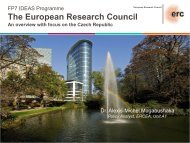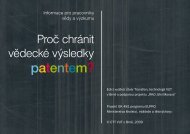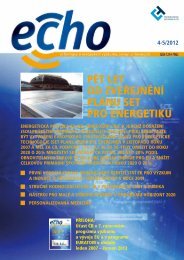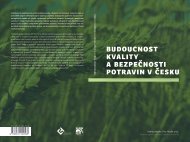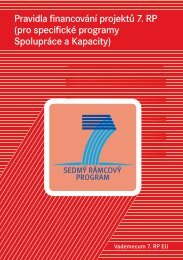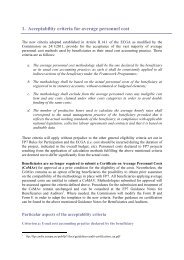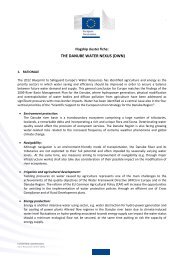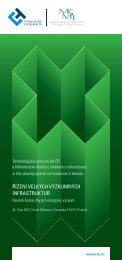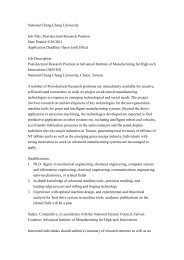Guide to Research and Innovation Strategies for Smart Specialisation
Guide to Research and Innovation Strategies for Smart Specialisation
Guide to Research and Innovation Strategies for Smart Specialisation
You also want an ePaper? Increase the reach of your titles
YUMPU automatically turns print PDFs into web optimized ePapers that Google loves.
Being outward-oriented<br />
Outward-orientation of a process is not just reflected in the international nature of the peer<br />
review process. It is also about constantly comparing the position of a region with actual <strong>and</strong><br />
potential competi<strong>to</strong>rs in the country, in other EU countries <strong>and</strong> even beyond. This broader<br />
perspective must be incorporated in the peer review, moni<strong>to</strong>ring <strong>and</strong> assessment of a RIS3 <strong>and</strong><br />
its outcomes. This means, <strong>for</strong> instance, <strong>to</strong> verify that market opportunities <strong>and</strong> the<br />
comparative advantage of the region with respect <strong>to</strong> other EU <strong>and</strong> non-EU regions have been<br />
<strong>and</strong> are regularly assessed. It should also be ascertained if sufficient ef<strong>for</strong>ts are made <strong>to</strong> avoid<br />
replicating, <strong>and</strong> <strong>to</strong> enhance synergies with, projects under way in other EU regions. Support<br />
schemes should be subjected <strong>to</strong> international comparison <strong>and</strong> benchmarking. Finally, the<br />
existence of relevant constraints <strong>to</strong> the free circulation of knowledge <strong>and</strong> related elements<br />
should be inspected: international R&D <strong>and</strong> innovation partnerships should be able <strong>to</strong> operate<br />
without administrative obstacles, <strong>and</strong> the cross-border mobility of research <strong>and</strong> innovation<br />
personnel should be facilitated.<br />
Being future-oriented<br />
The future-orientation of a process does not involve trying <strong>to</strong> make a bet on the next 'hot'<br />
technology. It is instead about incorporating in the strategy the fact that what seem <strong>to</strong> fixed<br />
<strong>and</strong> well established in the short term might evolve quickly, sometimes in unexpected<br />
directions. This implies considering scenarios on the possible evolution of the regional<br />
competitive position with respect <strong>to</strong> other regions in the country, in other EU countries <strong>and</strong><br />
even beyond. This long-term perspective must be incorporated in the peer review, moni<strong>to</strong>ring<br />
<strong>and</strong> assessment of a RIS3 <strong>and</strong> its outcomes. This means, <strong>for</strong> instance, <strong>to</strong> verify that the<br />
vulnerability <strong>and</strong> capacity of adaptation of the regional innovation system have been <strong>and</strong> are<br />
regularly assessed. Mechanisms should be in place <strong>to</strong> detect activities facing increasing<br />
competition <strong>and</strong> <strong>to</strong> devote special attention <strong>to</strong> them, by evaluating possibilities <strong>for</strong> the<br />
'upgrading' <strong>and</strong> 're-<strong>to</strong>oling' of existing sec<strong>to</strong>rs. Finally, the existence of relevant constraints <strong>to</strong><br />
the redeployment of physical, human <strong>and</strong> intellectual capital should be inspected: the mobility<br />
of resources from declining lines of business, firms <strong>and</strong> sec<strong>to</strong>rs <strong>to</strong> exp<strong>and</strong>ing ones should be<br />
facilitated.<br />
64



